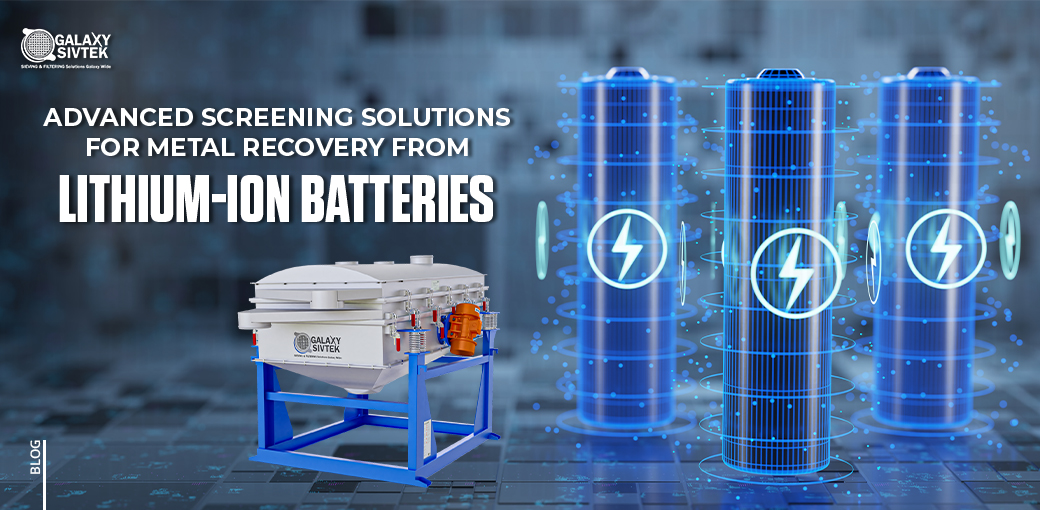
Committed To Quality, Committed To You
Recycling lithium-ion batteries is crucial for sustainability and resource conservation. The recovery of valuable metals, such as copper and aluminium, is vital in this process. Here’s an in-depth look at how recycling companies efficiently recover these metals from lithium-ion battery scrap.
The initial step in the recycling process involves crushing the lithium-ion batteries. Whether the batteries are cylindrical, pouch, or prismatic, they must be crushed to break them down into smaller pieces. Post-crushing, the material mix includes Paper, Foil, Plastic, Metal powder (containing copper and aluminium), and Black mass.
After crushing, the mixture is passed through an airflow separator. This stage is crucial for separating lighter materials like Dust, Plastic, Paper and Foil.
These lightweight components are removed, leaving behind heavier materials such as metal powder and black mass.
The heavier materials then move to a linear vibrating screen. This first screening stage helps to separate all the materials where all the major particles are separated but the metal powder is still mixed with the black mass and requires further processing.
To further refine the materials, they undergo a second crushing process. The re-crushed material is then processed using a high-vibration vibro separator. The re-crushed material is then screened using a super gyro separator. This high-vibration separator effectively separates the metal powder from the black mass. The result is a mixture of copper and aluminium metal powder, now free from the black mass.
The final step in the metal recovery process is gravity separation. The recovered metal powder mixture is transferred to a density separator, where copper and aluminium are separated in their pure form.
The entire process of recycling lithium-ion batteries and recovering metals involves several stages of crushing, screening, and separation. Galaxy Sivtek’s linear motion vibrating screens and high-vibration separators play a crucial role in this process, providing efficient solutions for major recycling companies.
By utilizing these advanced separation technologies, companies can recover valuable metals like copper and aluminium, contributing to a more sustainable and resource-efficient future.
Galaxy Sivtek can assist recycling companies in optimizing their processes with our state-of-the-art screening and separation equipment. For more information on how we can help with your lithium-ion battery recycling needs, contact us today.
